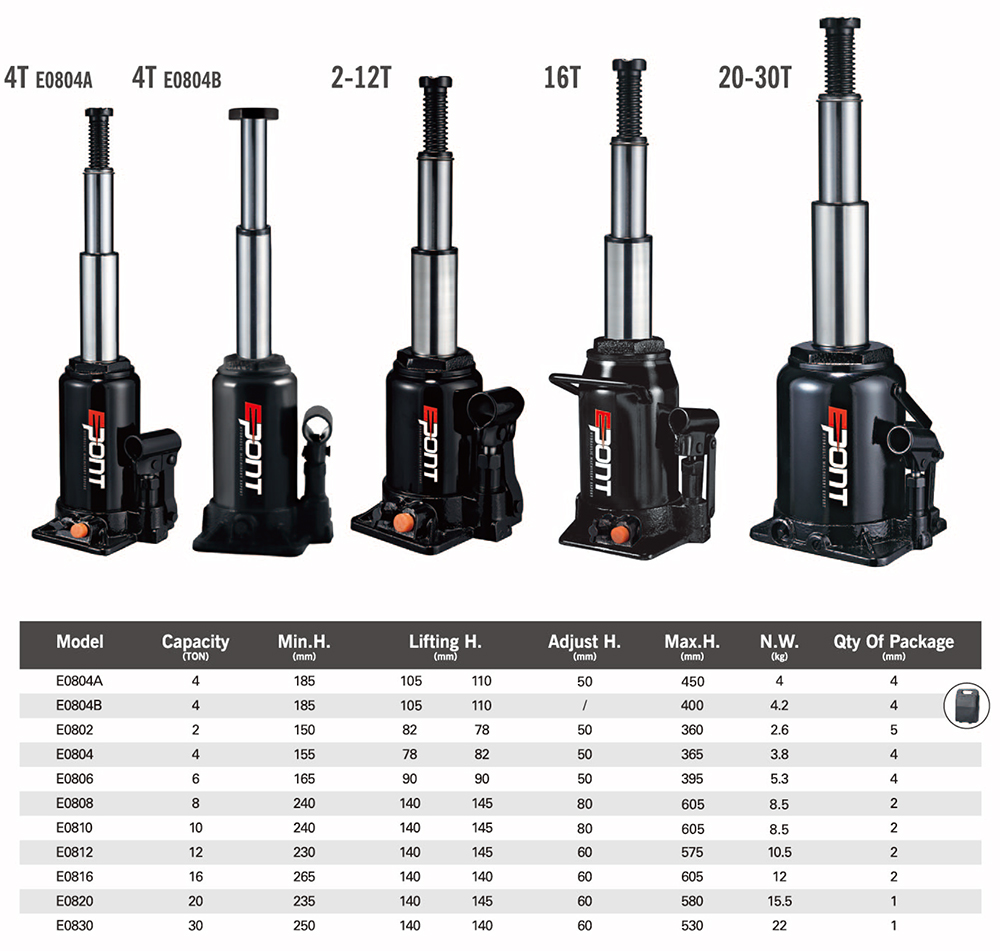A complete hydraulic system consists of five parts, namely power components, executive components, control components, auxiliary components and working medium.
The function of the power element is to convert the mechanical energy of the prime mover into the pressure energy of the liquid. The power element refers to the hydraulic pump in the hydraulic system, which provides power to the entire hydraulic system. The structure of hydraulic pump generally includes gear pump, vane pump, plunger pump and screw pump.
The function of the actuator is to convert the pressure energy of the liquid into mechanical energy and drive the load for linear reciprocating or rotary motion. The executive components are hydraulic cylinders and hydraulic motors.
Control elements (ie various hydraulic valves) control and regulate the pressure, flow and direction of the liquid in the hydraulic system.
The Speciality Hydraulic Bottle Jack has a more complicated structure.
According to different control functions, hydraulic valves can be divided into pressure control valves, flow control valves and directional control valves. Pressure control valves are further divided into relief valves (safety valves), pressure reducing valves, sequence valves, pressure relays, etc.; flow control valves include throttle valves, regulating valves, diversion and collector valves, etc.; directional control valves include check valves, Hydraulic control check valve, shuttle valve, reversing valve, etc. According to different control methods, hydraulic valves can be divided into on-off control valves, fixed value control valves and proportional control valves.

Auxiliary components include accumulators, filters, coolers, heaters, oil pipes, pipe joints, oil tanks, pressure gauges, flow meters, sealing devices, etc., which play auxiliary functions such as connection, oil storage, filtration and measurement of oil pressure. Working medium refers to the hydraulic oil or emulsion in various hydraulic transmissions. There are various types of mineral oil, emulsion and synthetic hydraulic oil. The hydraulic system realizes movement and power transmission through it. The original Speciality Hydraulic Bottle Jack is very important.
Hydraulic components can be divided into three categories: power components, control components and executive components. Although they are all hydraulic components, their own functions and technical requirements for installation and use are not the same. Now they are introduced as follows:
Power components: refers to various hydraulic pumps, gear pumps, vane pumps, plunger pumps, screw pumps.
- Gear oil pump and tandem pump (including external meshing and internal meshing) two structural types.
- Vane oil pumps (including single-stage pumps, variable pumps, two-stage pumps, and double pumps).
- Piston oil pumps are divided into axial piston oil pumps and radial piston oil pumps. Axial piston pumps include quantitative pumps, variable pumps, (variable pumps are divided into manual variables, pressure compensation variables, servo variables, etc. Type) From the structure, it is divided into two oil distribution methods: end face oil distribution and valve oil distribution. The oil distribution type of radial piston pump is basically valve oil distribution.
- Various components of hydraulic transmission can be conveniently and flexibly arranged according to needs.
- Light weight, small size, small movement inertia and fast reaction speed.
- Convenient operation and control, which can realize stepless speed regulation in a wide range (speed regulation range up to 2000:1).
- It can automatically realize overload protection.
